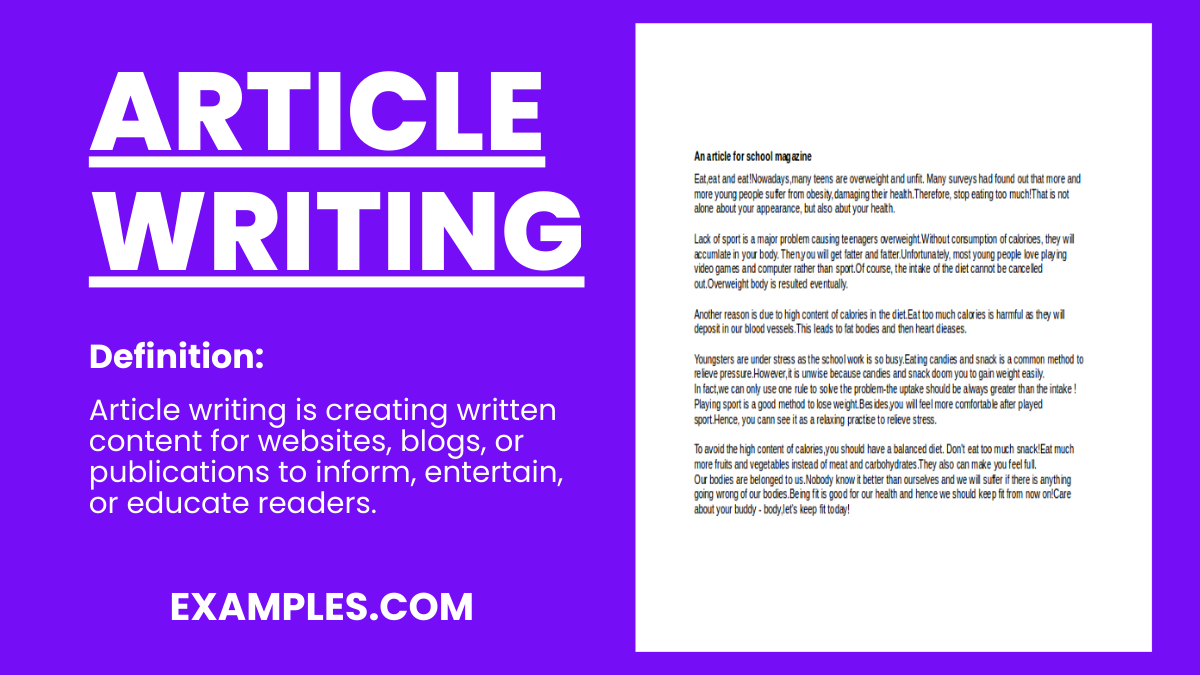Introduction to Engaging Articles
Engaging articles are essential tools for capturing and maintaining the attention of readers in today’s information-saturated environment. The fundamental objective of these articles is to create an immersive experience that resonates with the audience, provoking thought and encouraging further exploration of the topic. Engaging content often consists of multiple facets that cater to diverse reader preferences, which can be effectively achieved by incorporating Your Topics | Multiple Stories throughout the narrative.
By weaving together various narratives, writers can present a range of perspectives that foster a more profound emotional connection with the audience. This approach not only enriches the overall reading experience but also encourages readers to reflect on differing viewpoints and experiences. As readers encounter Your Topics | Multiple Stories within a single article, they are more likely to find elements that resonate with their personal experiences, enhancing engagement and promoting a deeper interest in the subject at hand.
The integration of personal anecdotes, case studies, and broader thematic storytelling enables writers to illustrate concepts more vividly. Each story can serve as a unique lens through which the audience can explore the topic, ultimately providing a more nuanced understanding. For example, when discussing social issues or historical events, incorporating individual stories can highlight the human element behind the statistics, fostering empathy and encouraging readers to consider the implications of the subject matter on a personal level.
Furthermore, engaging articles that utilize Your Topics | Multiple Stories can break up the monotony of dense information, allowing for a more dynamic reading experience. By alternating between facts, narratives, and insights, writers can not only inform but also entertain, drawing readers into a dialogue that extends beyond the page. As we delve deeper into the intricacies of crafting engaging articles, it becomes evident that the adoption of multiple stories is not merely beneficial but vital to their overall effectiveness.
Understanding Your Audience

When crafting an article centered around your topics | multiple stories, one of the most crucial steps is to comprehend your audience. Knowing who your readers are enables you to tailor your narratives effectively, ensuring that the content resonates with them on various levels. Researching audience demographics is the initial stride; this includes age, gender, location, and educational background. Such data offers insights into the collective profile of your readership, guiding you in the formation of relevant and compelling content.
Moving beyond basic demographics, it’s imperative to delve into the interests and preferences of your audience. This can be achieved through methods such as surveys, interviews, or analyzing existing reader engagement data from previous articles. Understanding what your audience values and what piques their curiosity can fuel your creativity when developing Your Topics | Multiple Stories to incorporate into your narrative. For instance, if your audience shows a strong preference for personal anecdotes or data-driven insights, you can structure your stories accordingly to reflect these inclinations.
Additionally, consider the contextual factors influencing your audience’s mindset at the time of reading. Current events, cultural trends, and societal issues can greatly affect what resonates with readers. By aligning your topics | Your Topics | Multiple Storieswith these relevant themes, you can foster a deeper connection with your audience. Keeping abreast of these shifts not only enhances your relevance but also ensures that your articles remain engaging. This cultural sensitivity can be particularly beneficial in shaping your storytelling approach.
By understanding your audience’s demographics, interests, and contextual influences, you can effectively craft content that speaks directly to them. This strategic approach minimizes the risk of disconnect and maximizes the potential for engagement, guiding your efforts in creating multiple compelling stories.
Choosing the Right Topics

Selecting the appropriate topics for an article is an essential step in the writing process, particularly when aiming to present multiple stories. The first consideration should be the interests and preferences of your target audience. Understanding what engages them allows for the creation of content that resonates and retains their attention. Utilizing surveys, social media interactions, or analytics data can provide insights into trending subjects that align with audience interests.
Equally important is the writer’s own passion and expertise in the chosen topic. Crafting narratives on subjects that intrigue and motivate you will naturally enhance your writing quality and authenticity. When both personal interest and audience relevance converge, it results in compelling content that invites engagement.
Brainstorming is a valuable strategy for generating ideas. Allocate dedicated time to explore various themes related to your niche. Consider using techniques such as mind mapping or listing keywords that relate to your field of interest. This can help visualize connections between different stories within a broader topic. Additionally, observe industry news, cultural trends, and emerging narratives that could provide fresh material to draw upon.
Once you have a list of potential topics, assess their relevance and scope for Your Topics | Multiple Stories. It is beneficial to choose themes that allow for diverse angles, insights, or perspectives. For example, a broader topic such as “sustainability” can yield numerous stories, including innovative practices, personal journeys, and expert interviews. This multifaceted approach not only broadens the appeal of the content but also enriches the reader’s experience.
In conclusion, effectively choosing the right topics is a balance between the interests of your audience and your passions as a writer. By employing strategic brainstorming and focusing on themes conducive to Your Topics | Multiple Stories, you are well on your way to crafting engaging articles that captivate and inform.
Utilizing Multiple Perspectives

Incorporating diverse viewpoints into an article can significantly enhance its depth and engagement. When writing about your topics | multiple stories, it is essential to recognize that each perspective brings its unique set of experiences and interpretations, which can enrich the narrative. One effective technique is to alternate between varying characters’ viewpoints across different sections or paragraphs. This allows readers to experience the subject from multiple angles, fostering a deeper understanding and connection to the material.
Another approach involves using anecdotes or testimonials from individuals who have encountered the core themes of your article. By including real-life stories, you can create relatability and emotional resonance, encouraging readers to invest more fully in the narrative. These personal accounts not only serve to humanize complex topics but also offer tangible illustrations of the concepts being discussed, making the content more relatable and persuasive.
As you weave together these varied narratives, consider employing transitional phrases and thematic connections to maintain coherence. This ensures that while your article encompasses Your Topics | Multiple Stories they are still tied together by common threads that reinforce the overarching message. Using techniques such as parallel storytelling allows for a seamless blend of different perspectives while clearly communicating how they intersect and diverge.
Furthermore, it is advisable to remain mindful of the article’s tone and purpose, ensuring that the inclusion of Your Topics | Multiple Stories aligns with the intended message. This balancing act can be challenging, but when executed skillfully, it leads to a richly textured experience for readers, keeping them engaged and thoughtful throughout the reading journey. In this way, effectively utilizing multiple perspectives not only enhances the narrative but also invites readers into a more comprehensive dialogue with the content.
Crafting Compelling Stories

Storytelling is a vital component of engaging writing, capable of drawing readers into the narrative and making complex ideas more accessible. The foundational elements of a compelling story include character development, conflict, and resolution. These elements serve as the backbone of the narrative, helping to maintain reader interest and emotional involvement.
Character development is crucial, as it allows the audience to connect with the narrative on a personal level. Readers appreciate well-rounded characters with relatable traits, backgrounds, and motivations. When crafting stories around your topics | multiple stories, consider illustrating characters’ journeys and growth. This investment in character arcs enables readers to empathize with their struggles, enhancing the emotional impact of the narrative.
Conflict is another essential feature of storytelling. It introduces tension and challenges that characters must face, compelling readers to engage with the plot. The nature of the conflict can vary, ranging from internal struggles to external antagonists, and it serves to propel the story forward. In the context of your topics | multiple stories, varying the type of conflict can keep the narrative fresh and maintain reader interest throughout the progression of the story.
Resolution ties the story together by providing closure to the conflict. A well-crafted resolution not only brings satisfaction but also reinforces the themes and messages within the narrative. It provides an opportunity to reflect on the insights gained through the characters’ journeys, inviting readers to ponder their own experiences. Authenticity is paramount throughout this process; readers are more likely to connect with stories that resonate truthfully with their emotions and experiences.
Thus, by integrating these storytelling elements while exploring your topics | multiple stories, writers can create narratives that not only captivate but also resonate deeply with their audience. This, in turn, fosters a strong connection between the reader and the story, making the writing more impactful and memorable.
Writing Techniques for Engagement
Engaging readers requires a deliberate choice of writing techniques that foster connection and encourage deeper interaction with the content. One effective method is the use of hooks at the beginning of the article. A well-crafted hook can be a compelling question, an intriguing fact, or a vivid scenario that draws readers in from the very first sentence. For example, posing a thought-provoking question immediately engages the audience, prompting them to contemplate and desire answers that the article provides.
In addition to hooks, employing an active voice can significantly enhance reader engagement. The active voice not only provides clarity and directness but also conveys energy and urgency. This tone captures attention and maintains interest, especially when combined with varied sentence structures. Alternating between short, punchy sentences and longer, more descriptive ones can create a rhythm that keeps readers captivated. Integrating lists or bullet points can also improve readability, allowing readers to digest information more easily.
Vivid descriptions play a crucial role in creating a sensory experience for readers. Utilizing metaphors and similes can paint nuanced pictures in their minds, enabling them to visualize concepts clearly. For instance, instead of saying, “the garden was beautiful,” one might describe it as “a sea of vibrant blooms that danced in the gentle breeze.” Such details not only embellish the narrative but also evoke emotional responses, fostering a stronger connection with the content.
Moreover, engaging readers through strategic questioning throughout the article encourages them to reflect and invest personally in the narrative. Questions can serve as guideposts, leading readers to ponder their own experiences or opinions on the discussed topics. By integrating these varied techniques effectively, writers can create articles on Your Topics | Multiple Stories that resonate with audiences and stimulate ongoing engagement.
Editing and Revising Your Draft
The editing and revising phase is critical in the process of creating an article that fully engages readers with your topics | multiple stories. This stage allows you to refine your content, ensuring that it conveys your intended message with clarity and coherence. The first step in this process is self-editing. After completing your initial draft, take a break before reviewing it. This break helps to approach your work with fresh eyes, making it easier to spot errors or areas requiring improvement. Focus on evaluating the overall structure, flow, and tone of your writing to ensure it meets the needs of your audience.
As you go through your draft, look for clarity in your arguments and ideas. Are your points well-articulated? Ensure that each paragraph logically connects to the next, creating a seamless narrative across your topics | multiple stories. Additionally, it’s important to eliminate unnecessary jargon and ensure that your language is accessible to readers. While professional terminology may be relevant, overuse can alienate your audience. A more concise and straightforward approach usually resonates better.
Seeking feedback from peers or writing groups can also be highly beneficial. Others may identify issues that you might have overlooked, providing you with valuable perspectives on how your article can be improved. When reviewing feedback, maintain an open mind and be willing to make necessary changes. Finally, after incorporating external feedback and making revisions, make a final proofread to catch any grammatical errors or typos. This last step is essential to present a polished article that effectively communicates your insights and captivates your audience with your topics | multiple stories.
Incorporating Visuals and Formatting
The integration of visuals in articles, particularly those covering your topics | multiple stories, plays a crucial role in enhancing engagement and comprehension. By incorporating images, infographics, and relevant formatting techniques, writers can significantly improve the overall presentation of their content. Visual elements not only adorn an article but also serve to break up extensive blocks of text, making it easier for readers to navigate the material.
Images are particularly effective in capturing the reader’s attention and can help illustrate the concepts or narratives described in the article. When selecting images, it is important to choose high-quality, relevant visuals that complement the specific stories being told. A picture is worth a thousand words, and an appropriately chosen image can convey emotions or highlight critical information more effectively than text alone. Similarly, infographics can distill complex data or Your Topics | Multiple Stories into easily digestible formats, allowing readers to grasp essential points at a glance.
Formatting techniques also play a pivotal role in an article’s readability. Utilizing bullet points, numbered lists, and subheadings can help to organize content logically and allow readers to scan for information quickly. Incorporating whitespace strategically can prevent a page from feeling cluttered, encouraging readers to engage with the text rather than overwhelming them with information. Furthermore, incorporating pull quotes or call-out boxes can emphasize key insights or compelling anecdotes from the Your Topics | Multiple Stories being shared, drawing the reader’s eye to important points.
In summary, the thoughtful incorporation of visuals and smart formatting is essential for creating an engaging article on your topics | multiple stories. By enhancing readability and providing visual context, writers can capture interest and enhance the overall impact of their narratives.
Promoting Your Article
After successfully crafting an engaging article on your topics, it is crucial to implement effective promotion strategies to ensure that it reaches a wider audience. The utilization of various platforms is vital in this endeavor. One of the most powerful tools is social media. Leveraging platforms such as Facebook, Twitter, LinkedIn, and Instagram can vastly increase the visibility of your content. Sharing snippets or highlights from the article can entice followers to read the full piece, thereby enhancing engagement. Regularly interacting with your audience across these channels can also foster a sense of community, encouraging users to share your article further.
In addition to social media, email marketing plays a significant role in promoting your article. Sending a newsletter featuring your latest work can efficiently reach your subscribers. By highlighting key points or offering exclusive insights related to your topics, you can pique interest and drive traffic to your article. Furthermore, collaborating with other writers or influencers in your niche can amplify your reach. By encouraging them to share your article with their followers, you tap into their audience and broaden your existing readership.
Search Engine Optimization (SEO) is another critical aspect of promoting your article. By employing SEO best practices, you can enhance the discoverability of your content on search engines. This includes optimizing your headlines, using relevant keywords naturally within the text, and crafting compelling meta descriptions. Moreover, ensuring your article is mobile-friendly and loads quickly can improve user experiences, further enhancing engagement. By strategically promoting your article across various channels and utilizing effective SEO techniques, you will position your topics | multiple stories for maximum visibility and interaction.






